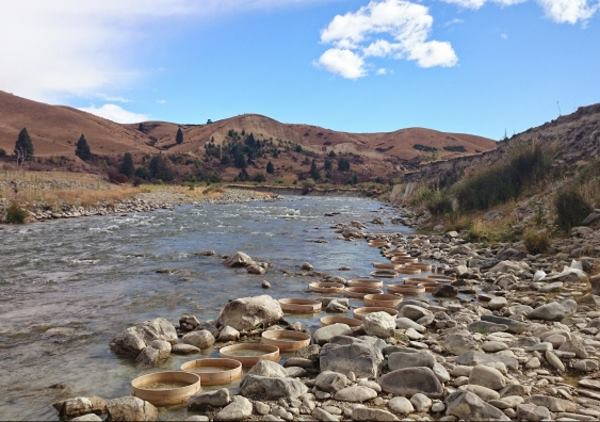A "giant" bat, whose size was three times that of living specimens today. An international team of scientists led by the University of New South Wales (UNSW) found the fossilized remains in New Zealand.
He is about to end up run over, his mother saves himA "giant" bat, whose size was three times that of living specimens today. An international team of scientists led by the University of New South Wales (UNSW) found the fossilized remains in New Zealand.
His name is Vulcanops jennyworthyae, a distant relative of the Mystacina robusta (burrowing or short-tailed bats) which became extinct millions of years ago.
The name was chosen in honor of team member Jenny Worthy who found the fossil and Vulcan bats, the mythological Roman god of fire and volcanoes, in reference to the tectonic nature of New Zealand.
The teeth and bones of the extinct bat have been recovered from sediments dating back 19 to 16 million years near the town of St. Bathans in Central Otago, South Island, the largest of New Zealand's two largest islands.
Co-author of the study, Professor Paul Scofield, of the Canterbury Museum, explains: “These bats, along with land turtles and crocodiles, show that important groups of animals have been lost in New Zealand. The iconic survivors of this lost fauna - the Tuatara, the Moa, the Liwi, the Acantisittidae and the leiopelmatidae frogs - have evolved into a much more complex community than we think. "
This diverse fauna lived in a 5600 square km prehistoric lake of Manuherikia that once covered much of the Maniototo region of the South Island. In the early Miocene, temperatures in New Zealand were warmer than today and there was abundance of semitropical forests.

Vulcanops provides new insight into the original diversity of bats in Australasia. His lineage died out sometime after the early Miocene, as did a number of other lineages found in San Bathans. These include crocodiles, land turtles, flamingo-like shovels, pigeons, parrots, shorebirds. Most were probably species suited to heat. After the Middle Miocene, global climate change created colder and drier conditions in New Zealand, with significant changes in vegetation and environments.
In New Zealand, only two bat species today comprise the entire fauna of terrestrial mammals. Burrowing bats today are only found there, but they once also lived in Australia. Their particular characteristic is that they not only fly but also move on all fours, on the forest floor and along the branches of trees, while foraging on food. In this regard, their diet is also varied. They are in fact omnivorous creatures, which eat both animals and plants.
“New Zealand burrowing bats are also renowned for their extremely extensive diet. They eat insects and other invertebrates such as weta and spiders, which they catch with their wings or chase on foot. They also regularly consume fruit, flowers and nectar, ”explains Professor Hand, who is director of the PANGEA Research Center at UNSW.
With an estimated weight of around 40 grams, the newly discovered fossil bat is the largest burrowing bat yet known. It also represents the first new genus of bat to add to New Zealand's fauna in over 150 years.
Along with other species, burrowing bats belong to a superfamily that once spanned the southern masses of Australia, New Zealand, South America, and possibly Antarctica.
About 50 million years ago, these landmasses were connected, what remained of the southern supercontinent Gondwana. Global temperatures were up to 12 degrees higher than today, and Antarctica was forested and free of ice. With the subsequent fragmentation of Gondwana, the cooler climate, and the rise of ice sheets in Antarctica, Australasian burrowing bats became isolated from their South American relatives.
However, Vulcanops's varied diet brings it closer to its South American counterparts than the bats living in New Zealand today.
READ also:
- MASSACRE OF FLYING FOXES IN AUSTRALIA: KILLED IN MASS FROM THE HOT RECORD
- WHAT TO DO IF YOU FIND A BAT
- THE SHOW OF THE LARGEST COLOGNE OF FLYING BATS (PHOTOS AND VIDEO)
The study, conducted by Australian, New Zealand, British and US researchers, was published in Scientific Reports.
Francesca Mancuso


























